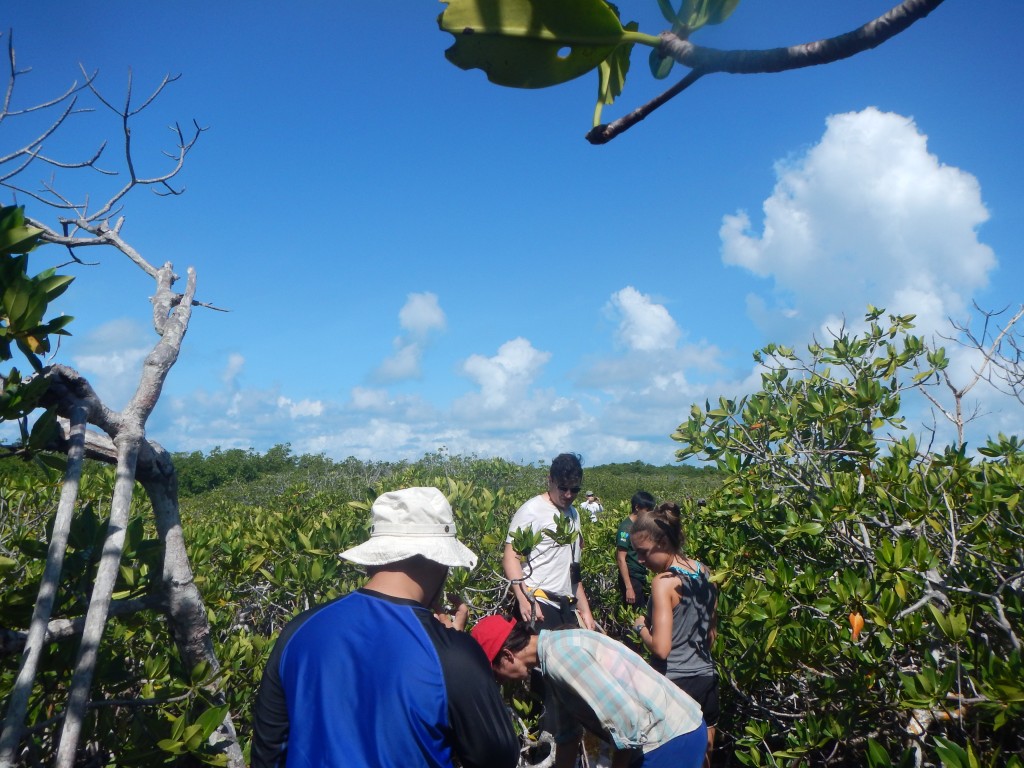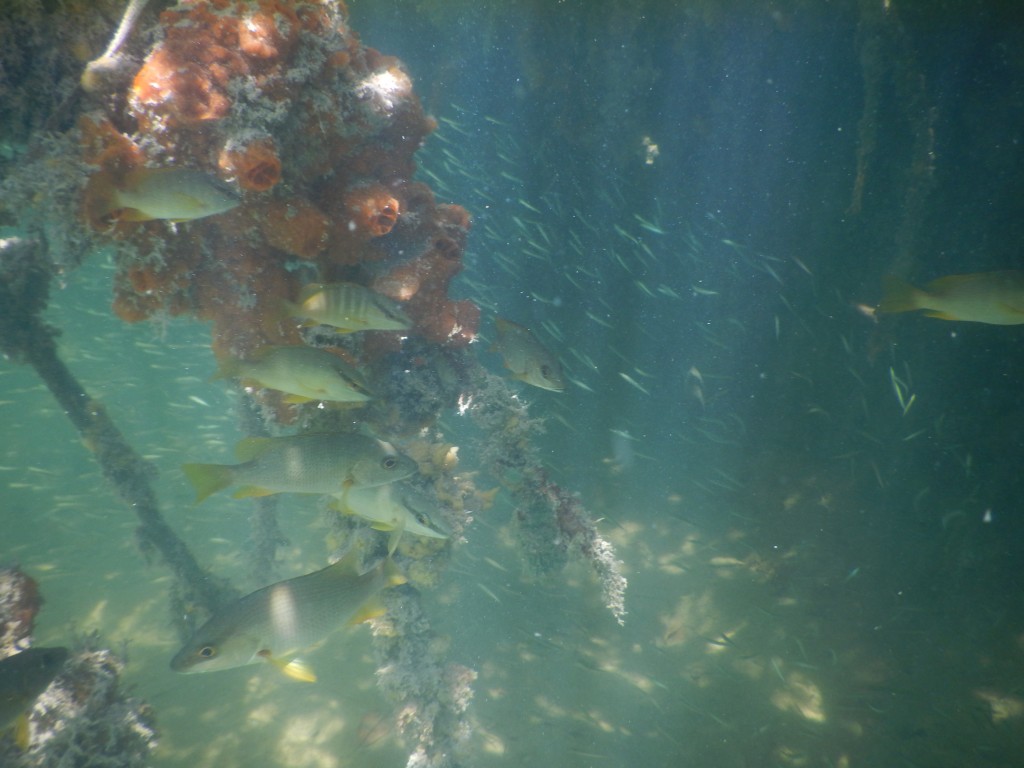This morning we packed up our things and very sadly left Glovers Reef. Watching the paradisiacal island grow smaller in the distance, the only thing that lifted my spirits me was the realization that soon all of my bug bites will grow smaller as well. On our way back to Belize City, we first stopped on Carrie Bow Cay, an island of about 1.5 acres that is home to a Smithsonian research station. Our tour of the facilities had everyone wishing that they could do research or be a volunteer station manager there in the future. It was also sobering, though, because the current station managers mentioned that the island has lost considerable land due to rising sea level. The island also lost its population of mangroves, which increases the rate of erosion. On top of normal rates, hurricanes are particularly destructive because of the high wind and wave action that they entail. On the current trajectory, Carrie Bow Cay may disappear before we are able to go back. Seeing the island put climate change into perspective for me. Rising sea levels are something we hear about, but it’s difficult to imagine an entire island ceasing to exist until you have seen it in action.
Our next stop was Twin Caye to visit mangroves and view the diversity that they hold. Mangroves are an important habitat for young fish because of the protection that they provide. As mentioned above, they also prevent erosion and even create land. In one area we were able to walk between mangrove trees in the soil that they had created. It smelled pretty bad and there were a fair number of sinkholes, but it was cool to see how productive the trees are.

Afterward, we put on our dive skins, masks, and fins one last time to snorkel next to the roots of the mangrove. The sandy bottom was home to hundreds of upside down jellyfish which sit on the sea floor with their bell to the ground and their tentacles raised to the surface. When the water around them is disrupted they start to float around, so we had to be careful not to disturb the water around them. We also saw a number of sea stars that were at least a foot in diameter. I don’t think I had ever seen live sea stars that were that big. Additionally, the sea floor was home to Caulerpa sertularioides, a species that has very feather-like branches and prefers to live in sandy areas and near mangroves. I hadn’t seen the species yet, so I’m glad we got a chance to visit the mangroves.
It was also amazing to witness how much life the mangroves supported. All of the roots were covered in species of algae and sponges that provided even more habitat for fish and other animals that flitted between the roots and lived in the sheaths of biotic material around the roots.

When we were done with the mangroves we packed up all of our dirty and wet clothes and made our way back to Belize City. Getting through the tiny airport was relatively easy. It’s weird being back in the U.S. with so many people and so much activity everywhere. It will be strange not eating rice, beans, and chicken for almost every lunch and dinner.
